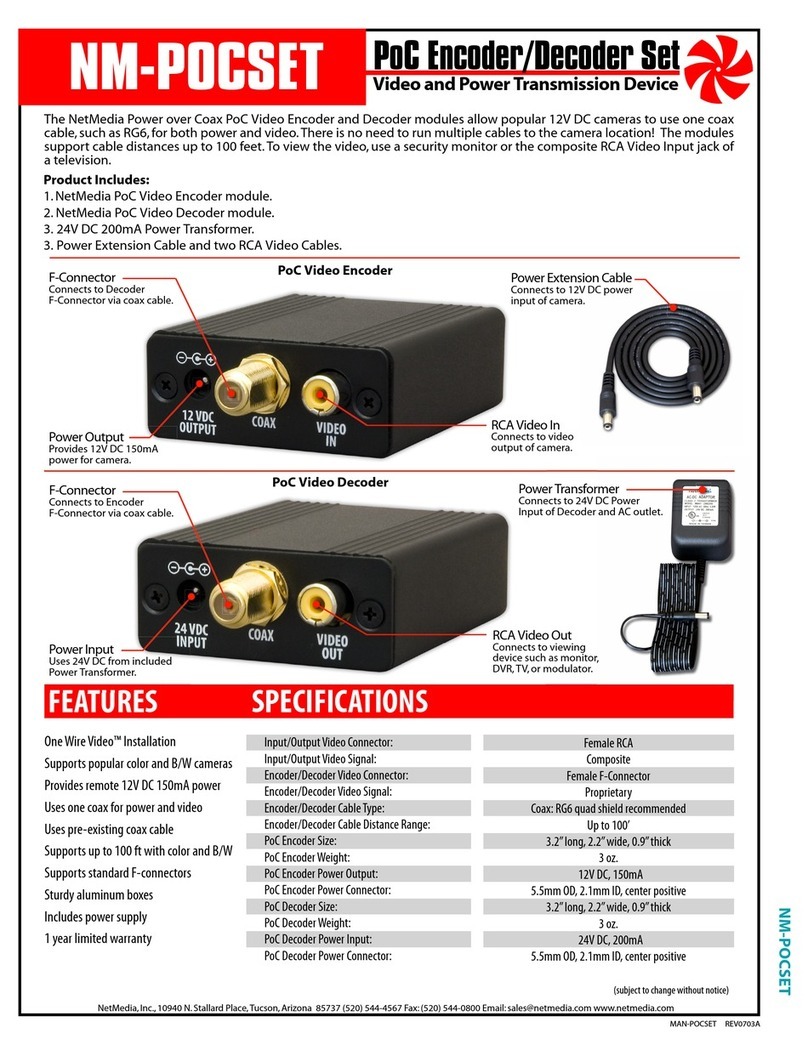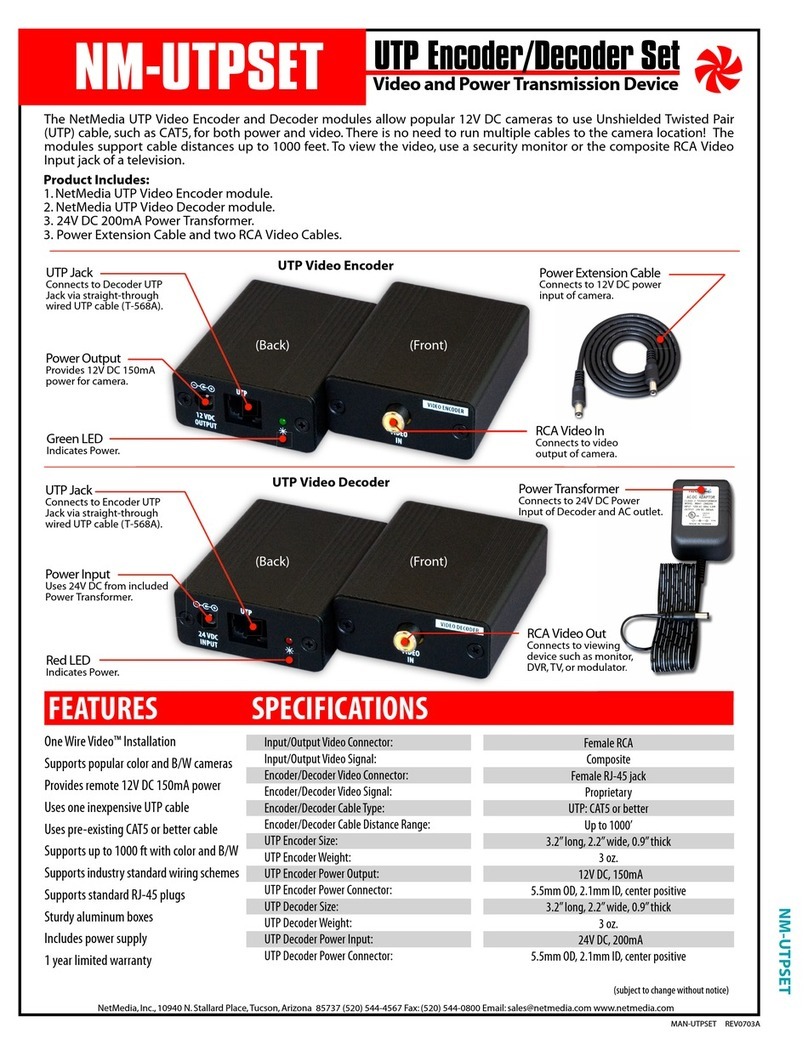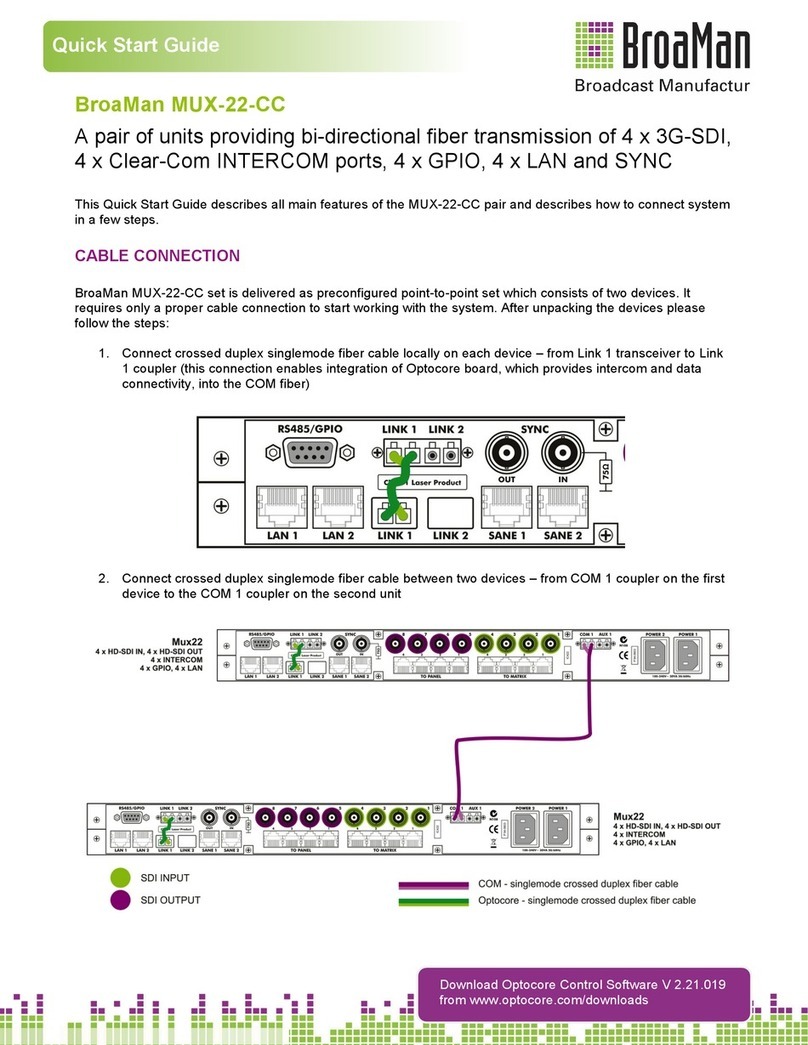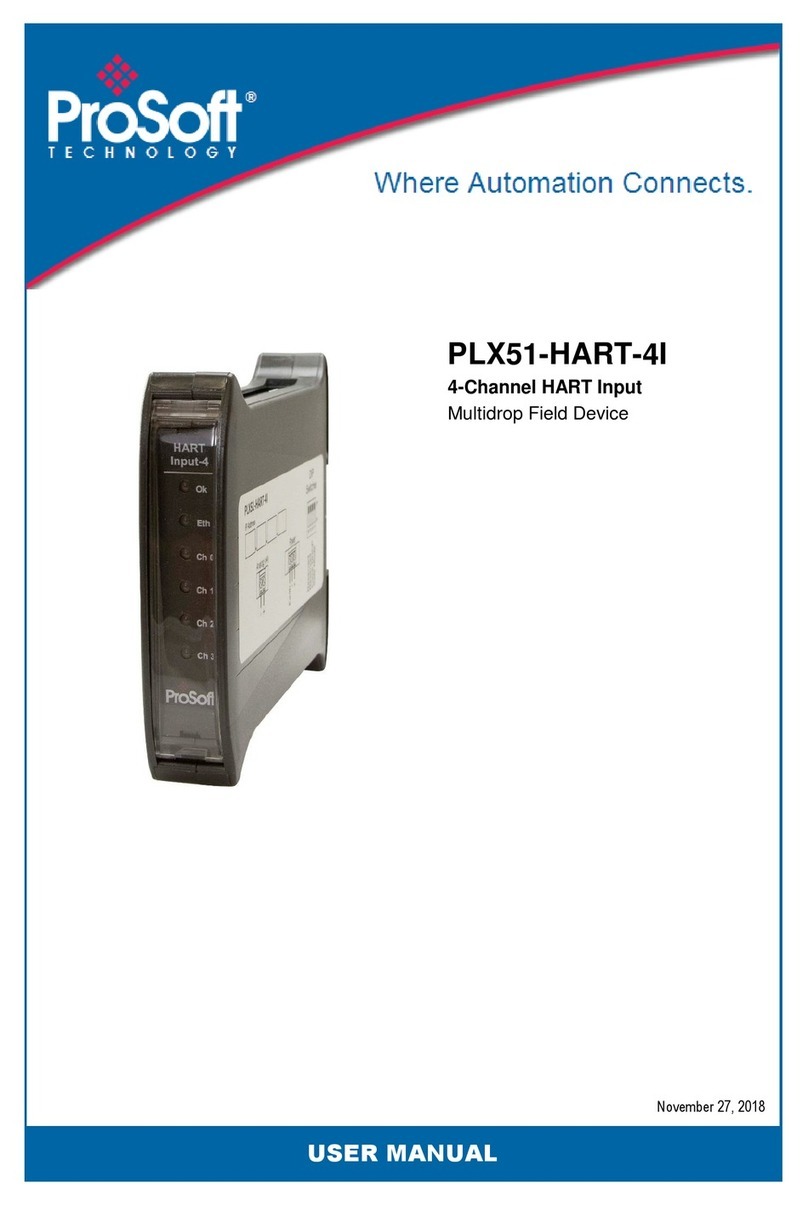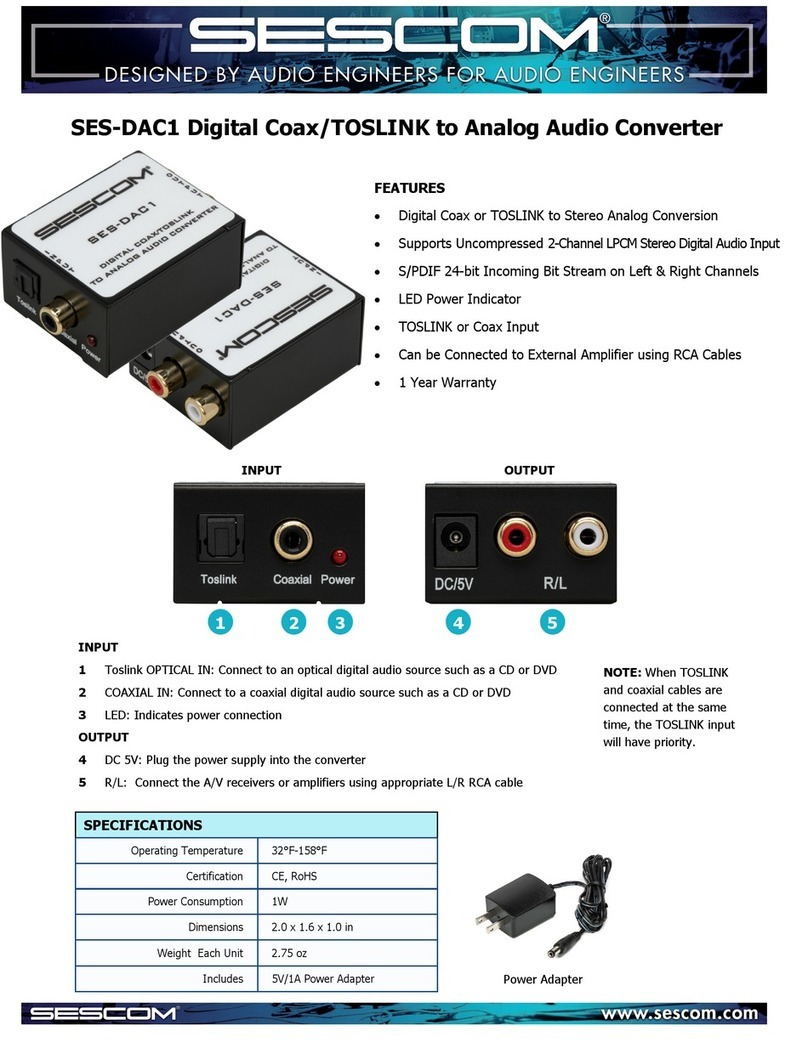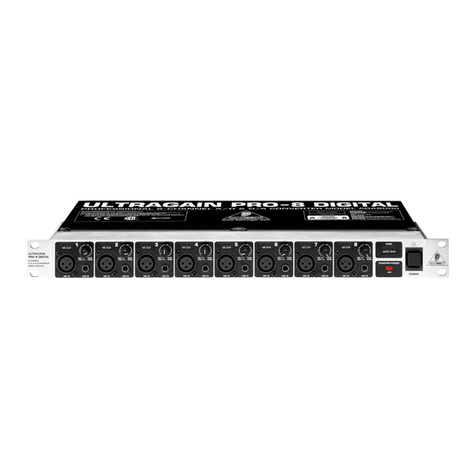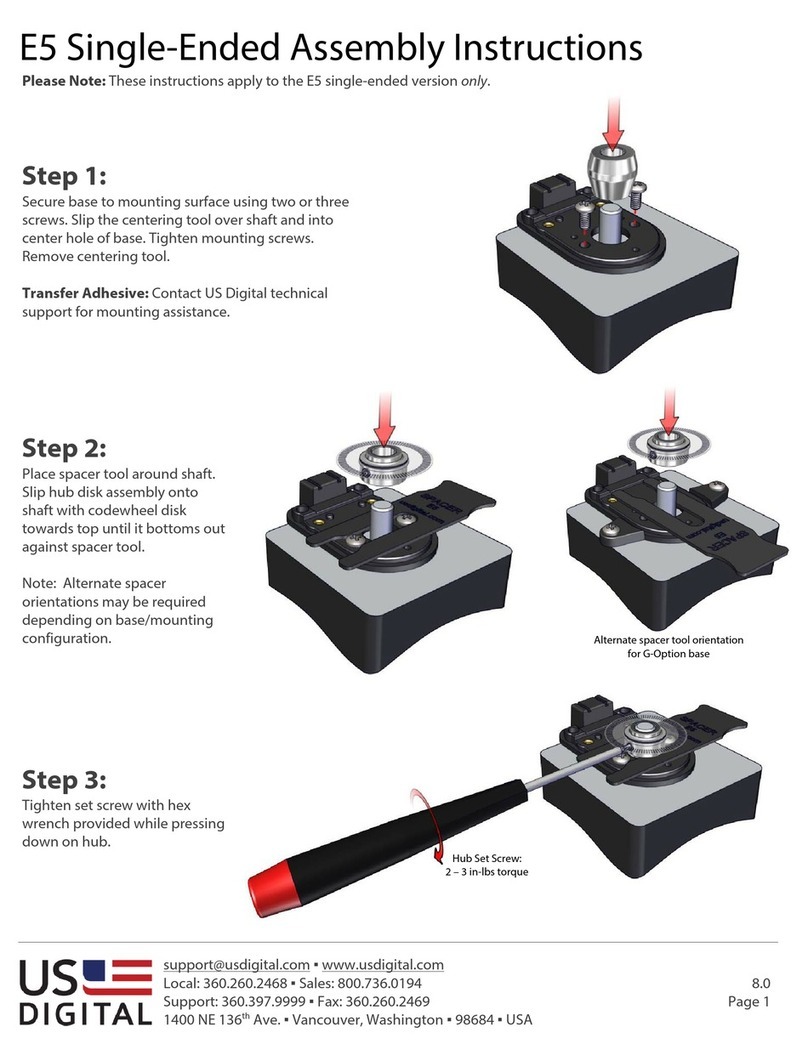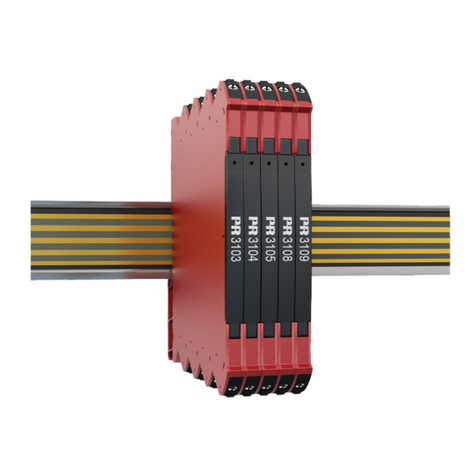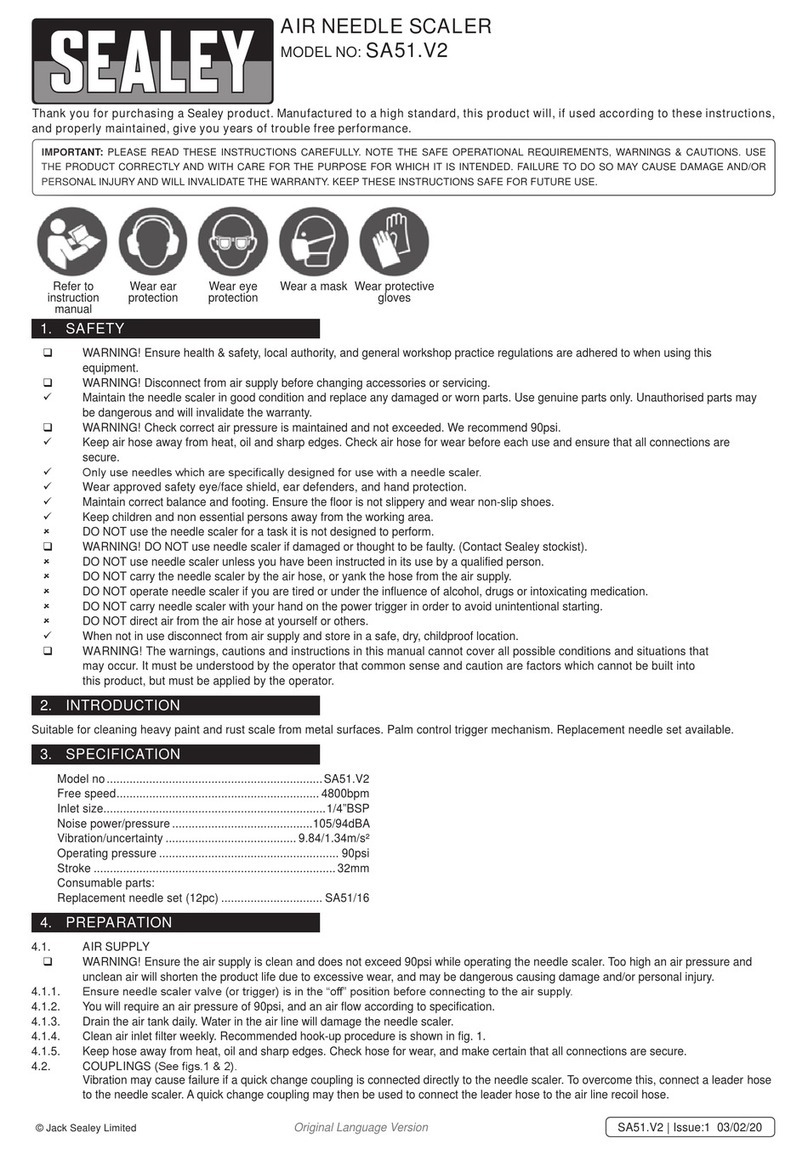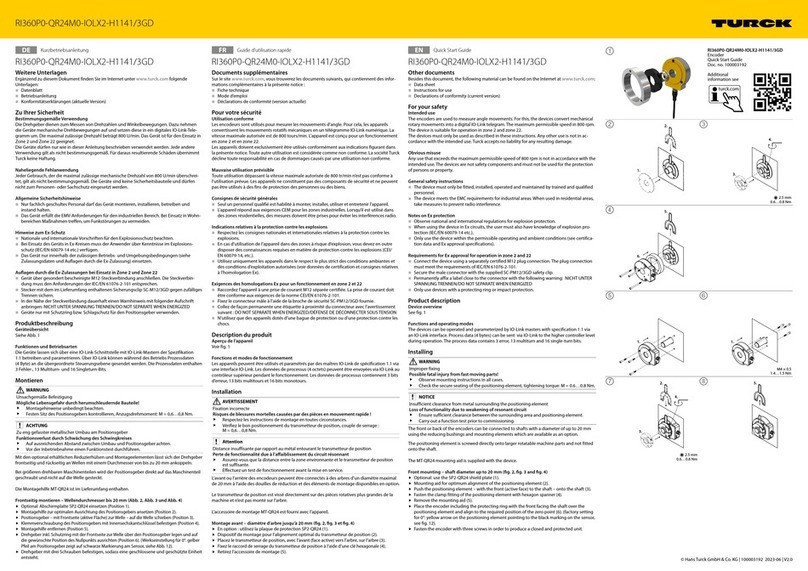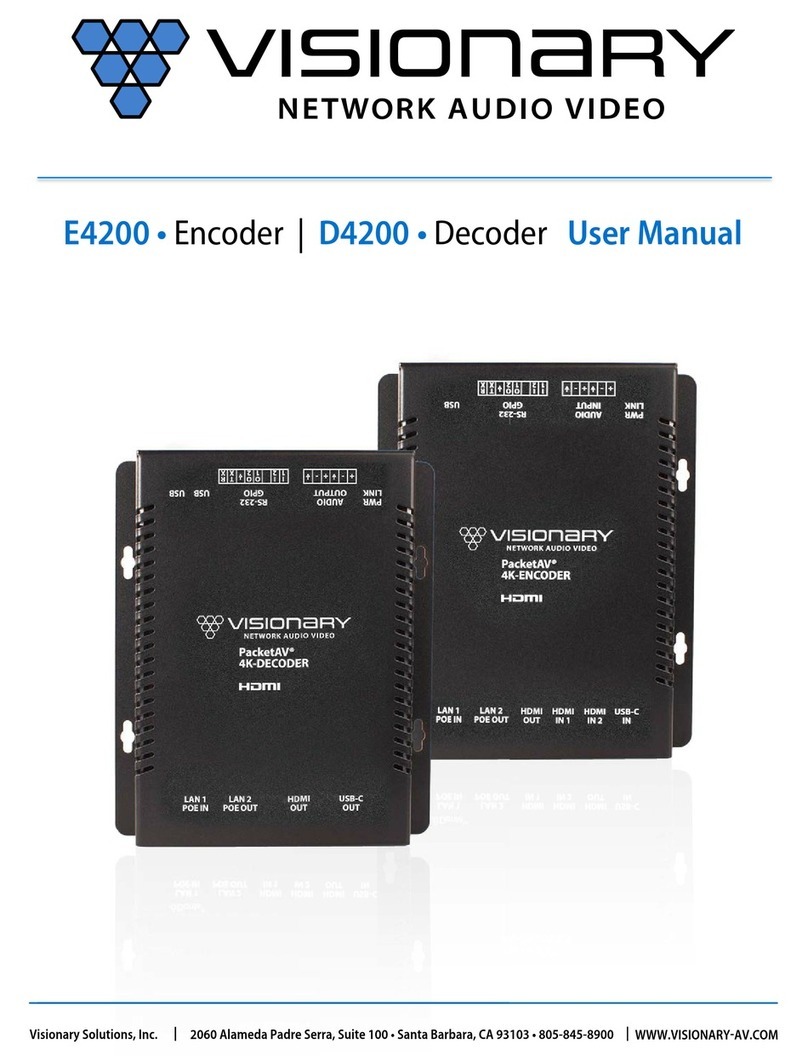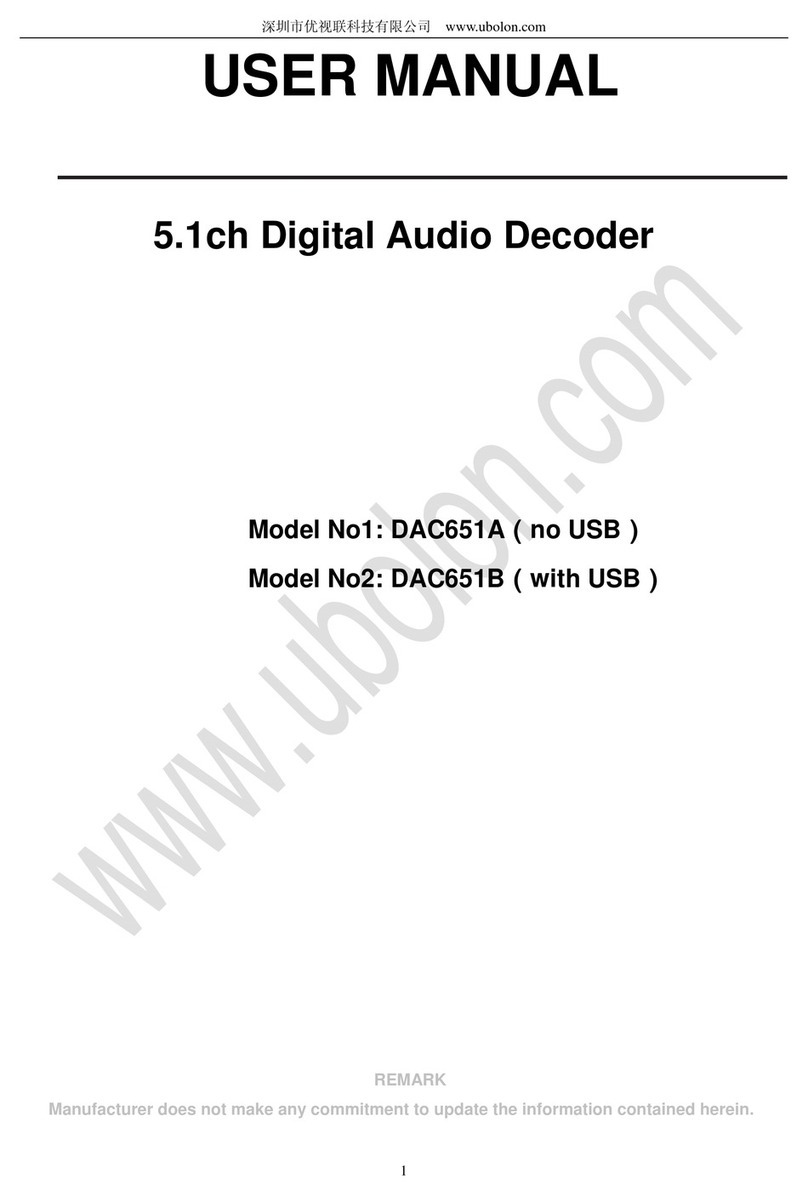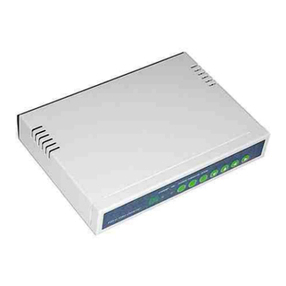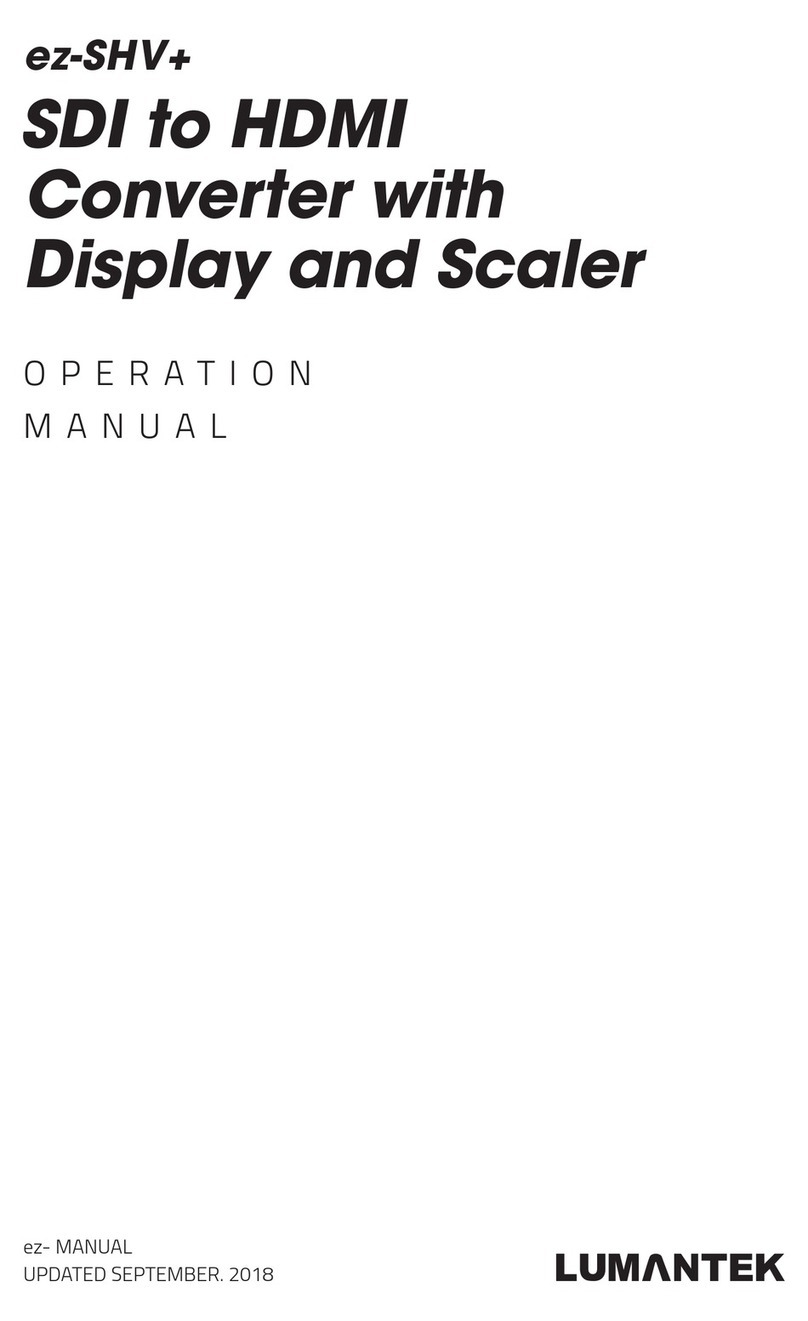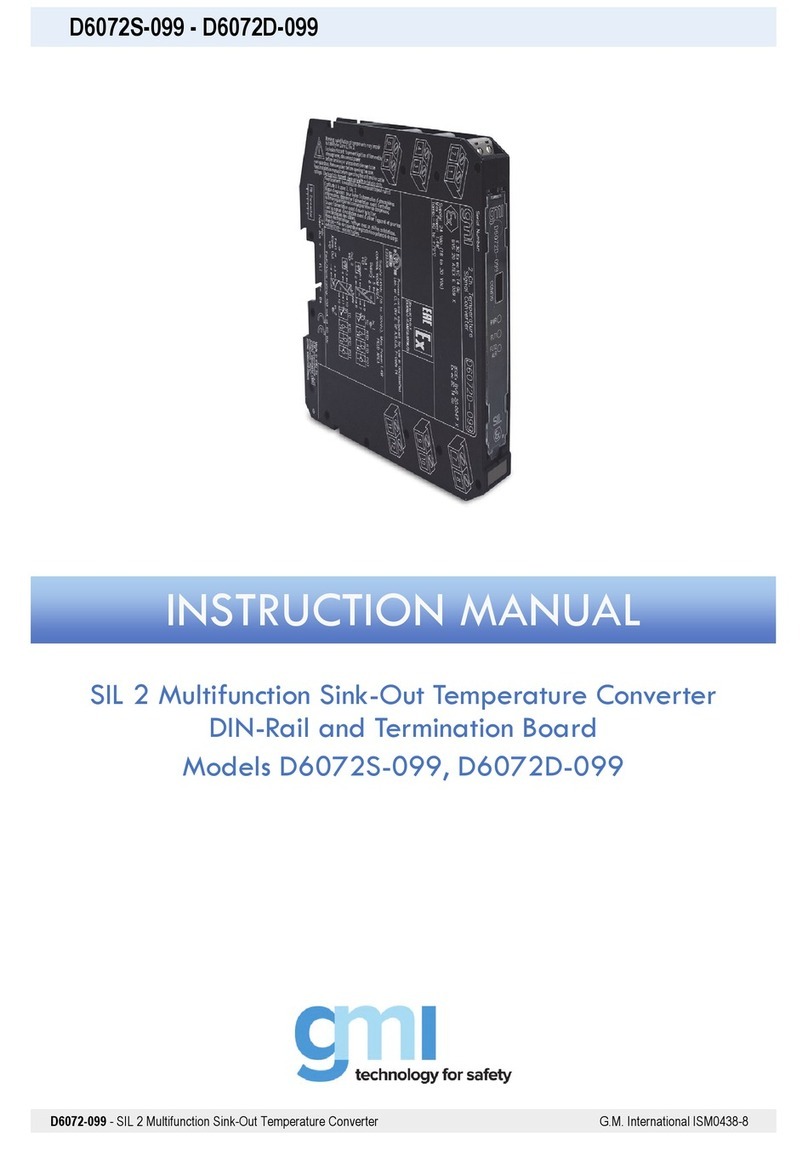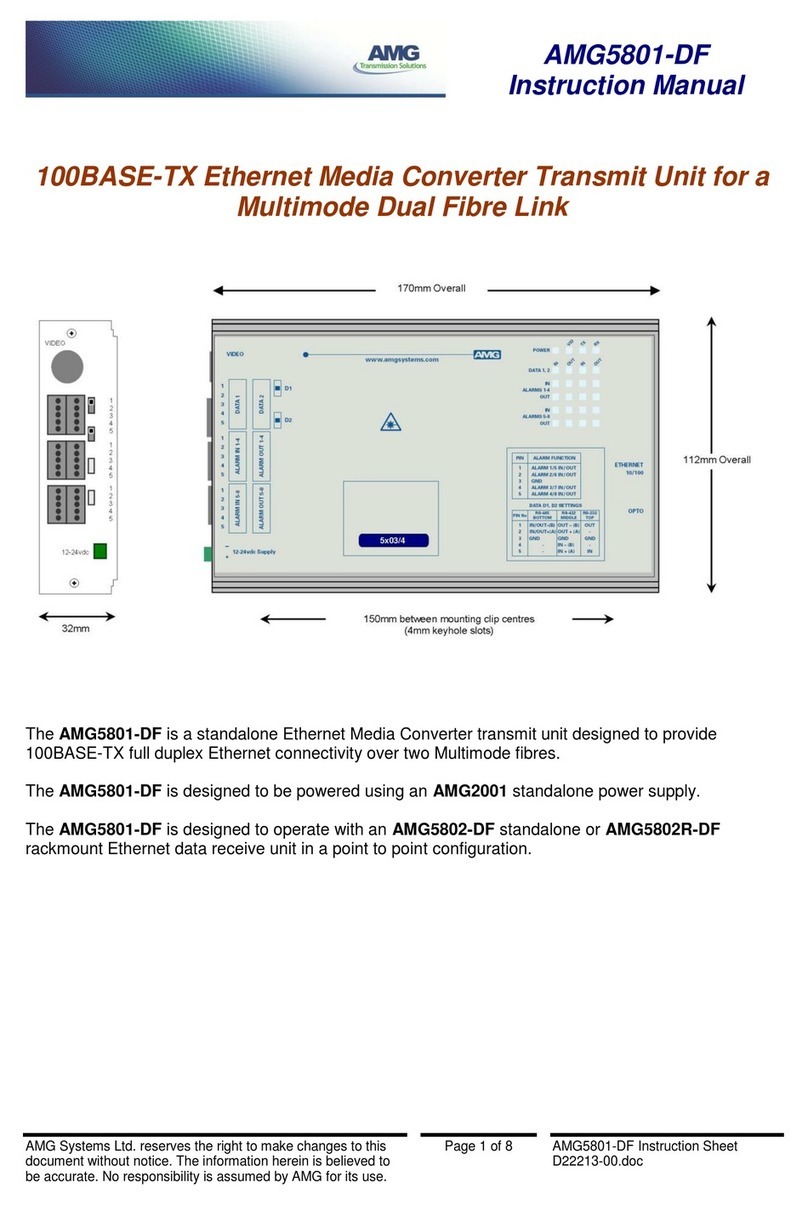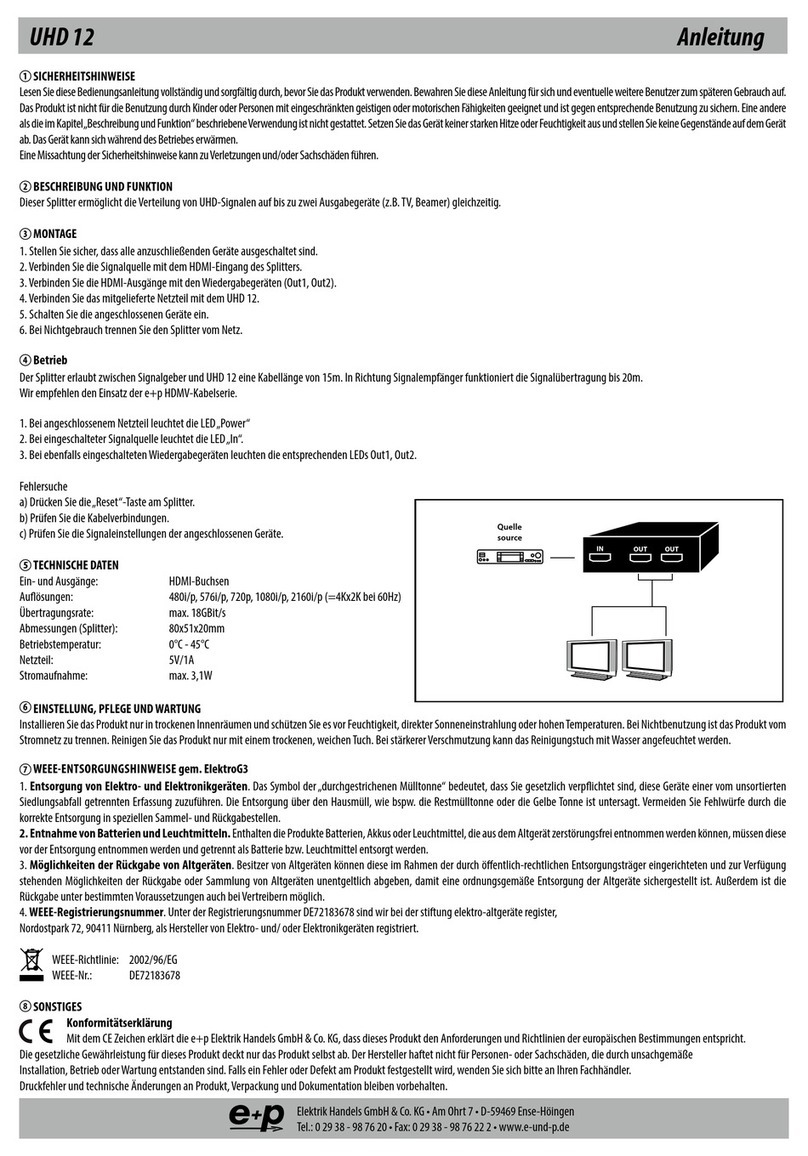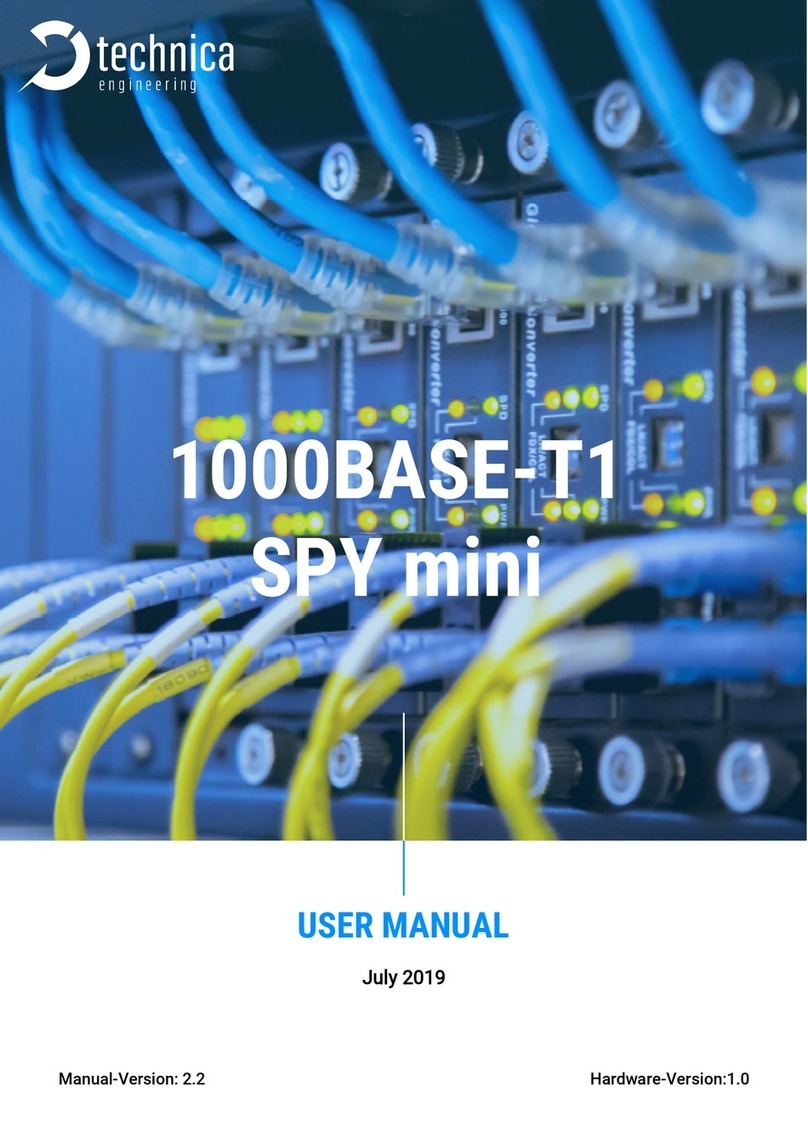Net Media SitePlayer Telnet Series User manual

RS232 to Ethernet Protocol Converter
User’s Manual
Version 1.11
2-Oct-06
(For SitePlayer Telnet Software Version 1.4ahu and above)
© 2004-2006 Netmedia Inc. All Rights Reserved. 10940 N Stallard Place Tucson, AZ 85737 520.544.4567
*POE version depicted

Copyright © 2004-2006 NetMedia, Inc.
All rights are reserved. This manual may not, in whole or part, be copied, photocopied, reproduced, trans-
lated, or reduced to any electronic medium or machine-readable form without the prior agreement and
written permission of NetMedia, Inc.
NetMedia, Inc.
10940 N. Stallard Place
Tucson, Arizona 85737
TEL: (520) 544-4567
FAX: (520) 544-0800
PURCHASE TERMS AND CONDITIONS
The laws of the State of Arizona shall govern PURCHASE TERMS AND CONDITIONS. LIMITED WARRANTY:
NETMEDIA MAKES NO WARRANTIES OTHER THAN THOSE CONTAINED HEREIN AND NETMEDIA EXPRESSLY
DISCLAIMS ANY AND ALL IMPLIED WARRANTIES, INCLUDING ANY WARRANTY OF FITNESS FOR A PARTICU-
LAR PURPOSE OR OF MERCHANTABILITY.
The foregoing limited warranty shall not apply unless Buyer has paid for in full the NetMedia products. Elec-
tronic updates to the NetMedia SitePlayer User’s Manual and NetMedia SitePlayer software are available free
to Registered Buyer upon request for a one (1) year period from the invoice date.
NOTICE
NetMedia, Inc. reserves the right to make improvements in the software product described in this manual as
well as the manual itself at any time and without notice.
DISCLAIMER OF ALL WARRANTIES AND LIABILITY
NETMEDIA, INC. MAKES NO WARRANTIES, EITHER EXPRESSED OR IMPLIED, WITH RESPECT TO THIS MANUAL
OR WITH RESPECT TO THE SOFTWARE DESCRIBED IN THIS MANUAL, ITS QUALITY, PERFORMANCE, MER-
CHANTABILITY, OR FITNESS FOR ANY PARTICULAR PURPOSE. NETMEDIA, INC. SOFTWARE IS SOLD OR LI-
CENSED “AS IS”. IN NO EVENT SHALL NETMEDIA, INC. BE LIABLE FOR INCIDENTAL OR CONSEQUENTIAL DAM-
AGES RESULTING FROM ANY DEFECT IN THE SOFTWARE.
Tested To Comply
With FCC Standards
FOR HOME OR OFFICE USE
SitePlayer Telnet SPTS

3
SitePlayer Telnet User’s Manual
Conventions
Certain conventions are used throughout this reference document:
The term Siteplayer and SitePlayer Telnet is used interchangeably.
Web screen shots may not appear exactly the same between various web browsers and operating
systems.
•
•

SitePlayer Telnet User’s Manual
4
Table of Contents
Conventions ....................................................................................................................................................... 3
Introduction ....................................................................................................................................................... 7
Distinguishing Various SitePlayer Telnet Models .................................................................................. 8
Original Siteplayer Telnet ....................................................................................................................... 8
POE Siteplayer Telnet (RoHS) ................................................................................................................. 8
POE Siteplayer Telnet (non-RoHS) ........................................................................................................ 8
Specifications ..................................................................................................................................................... 9
Configuration and Setup .............................................................................................................................11
SitePlayer Telnet Setup Web Page ......................................................................................................13
Services Web Page ...................................................................................................................................15
Change Device Name .......................................................................................................................15
Change Port Values ...........................................................................................................................15
Change TCP Keep-Alive ...................................................................................................................16
Set Extra Port .......................................................................................................................................16
Serial Web Page ........................................................................................................................................17
Serial Port Parameters ......................................................................................................................17
UDP Serial Configuration ................................................................................................................18
UDP Remote IP ....................................................................................................................................18
Remote IP is ..........................................................................................................................................19
UDP Timeout ........................................................................................................................................19
Buffer Management ..........................................................................................................................19
Buffer Threshold .................................................................................................................................19
End of Buffer Byte is ..........................................................................................................................19
End of Buffer Byte ..............................................................................................................................19
Bit Stall Delay is ...................................................................................................................................20
Bit Stall Delay .......................................................................................................................................20
Telnet Web page .......................................................................................................................................21
Current Connection State ..............................................................................................................21
Current Remote IP .............................................................................................................................22
Current Remote Port .........................................................................................................................22
SitePlayer Mode ..................................................................................................................................22
Server Connects or Client Connects/Disconnects on ...........................................................22
Clear Buffer on ....................................................................................................................................22
Client Connects on ............................................................................................................................22
Data Transfer Mode ...........................................................................................................................23
Remote Port .........................................................................................................................................23
Retry Period .........................................................................................................................................23
Idle Disconnect Timeout .................................................................................................................23
DTR Output State ...............................................................................................................................23

5
SitePlayer Telnet User’s Manual
Force AT Mode on ..............................................................................................................................24
IP Web Page ................................................................................................................................................25
DHCP Configuration .........................................................................................................................25
Fixed IP Addresses .............................................................................................................................25
Security Web Page ...................................................................................................................................27
Change Username and Password ................................................................................................27
Authorized Port, IP address and Mask ........................................................................................28
Admin Web Page ......................................................................................................................................29
Set LED Brightness ............................................................................................................................29
Blink LED ...............................................................................................................................................29
Telnet Test Mode ................................................................................................................................30
Restart SitePlayer ...............................................................................................................................30
Set to Factory Defaults .....................................................................................................................30
Clear Persistent Storage ..................................................................................................................31
Update Web Page .....................................................................................................................................32
Uploading Custom Web Pages ..................................................................................................................33
SitePlayer Services and Protocols .............................................................................................................35
Address Resolution Protocol ARP .......................................................................................................35
PING ..............................................................................................................................................................35
Zero Configuration (ZeroConf) Link Local (LL) Address Acquisition .....................................35
Multicast DNS (mDNS) ...........................................................................................................................35
Bonjour ........................................................................................................................................................36
Dynamic Host Configuration Protocol (DHCP) ..............................................................................36
Transmission Control Protocol / Internet Protocol (TCP/IP) ......................................................36
User Datagram Protocol (UDP) ............................................................................................................36
Hypertext Transfer Protocol (HTTP) ...................................................................................................36
Telnet ............................................................................................................................................................36
Daytime ......................................................................................................................................................37
Discard ........................................................................................................................................................37
UDP Serial (UDPS) ...................................................................................................................................37
Informative and Error Messages ...............................................................................................................38
Factory defaults are being set. Please wait... .................................................................................38
Parameters set OK ...................................................................................................................................38
Restarting. Please wait... .......................................................................................................................38
Bad flash file. ..............................................................................................................................................38
Bad request from browser or file not found. .................................................................................38
Error setting parameters ........................................................................................................................38
Firmware received OK. Reflashing, please wait... ..........................................................................38
Website feature/version mismatch ....................................................................................................38
Website received OK. Restarting... .....................................................................................................38
End Plate Description ...................................................................................................................................39
Performing Hardware Reset to Set SitePlayer to Factory Defaults ..............................................40

SitePlayer Telnet User’s Manual
6
Appendix A .......................................................................................................................................................41
AT Command Set ......................................................................................................................................41
Telnet Current Connection State ........................................................................................................44
Installing a Zeroconf / Bonjour Browser Under Windows .........................................................45
Telnet Network Virtual Terminal (NVT) .............................................................................................46
Adding Route to Windows so Link Local Devices Can be Accessed ......................................47
TCP/IP Tuning Considerations .............................................................................................................48
Windows ...............................................................................................................................................48
Mac OS X or FreeBSD ........................................................................................................................48
Linux .......................................................................................................................................................48
Appendix B .......................................................................................................................................................49
DB-9 Null Modem Cable Wiring ..........................................................................................................49
Telnet Carrier Schematic ........................................................................................................................50
Telnet Module Pin-Out ...........................................................................................................................51
RoHS ....................................................................................................................................................................51

7
SitePlayer Telnet User’s Manual
Introduction
SitePlayer Telnet is an RS232 to Ethernet protocol converter. It allows you to connect legacy RS232 devices
to the internet by providing a TCP/IP telnet session to an RS232 port. SitePlayer Telnet is configured using a
standard web browser. A variety of parameters may be configured for both the serial port and the internet
connection.
With SitePlayer Telnet you will be able to make an RS232 serial device accessible from any where there is an
internet connection. You will no longer be restricted by wiring limitations. If you have access to the internet,
you will be able to also access SitePlayer. There are many devices which can only be controlled via RS232.
With SitePlayer you can now control these devices through the internet. You can also use two SitePlayer
Telnet devices to create an internet bridge between two serial devices.
This document describes the SitePlayer Telnet product which comes completely assembled including
SitePlayer Module, Telnet carrier board and case. If you have purchased just the SitePlayer Module, you will
find a schematic in Appendix B of the non Power Over Ethernet Telnet carrier board which will help illustrate
how to connect the SitePlayer module to external devices. Appendix B also contains the pin-out for the
SitePlayer Module. If you are using just a SitePlayer Module, please keep in mind that the signal levels de-
scribed in this document are RS232 levels, and that the module levels will be inverted.

SitePlayer Telnet User’s Manual
8
POE Siteplayer Telnet (non-RoHS)
5.0VDC (optional) Power requirements
External 100-250VAC 50/60Hz universal power adapter
POE compatibile RJ-45 with 2 LEDs
•
•
•
POE Siteplayer Telnet (RoHS)
5.0VDC (optional) Power requirements
External 100-240VAC 50/60Hz universal power adapter
POE compatible RJ-45 with 2 LEDs
•
•
•
Distinguishing Various SitePlayer Telnet Models
Below you will find several SitePlayer Telnet Systems illustrated so that you can distinguish between them.
Original Siteplayer Telnet
7.5VDC Power requirements
External 110VAC 60hz power adapter
•
•

9
SitePlayer Telnet User’s Manual
Specifications
Some of SitePlayer Telnet’s features include
Compact size
RJ45 10BaseT Ethernet interface
Binary data or Network Virtual Telnet (NVT) transfer using TCP/IP
Binary data transfer using UDP
Full configurable RS232 DB-9 serial port
Baud rate selection from 50 to 115000 baud
Parity selection Odd, Even or none
Flow control selection RTS/CTS, XON/XOFF or none
Data bit selection 7 or 8 bit
Control signals available RTS, CTS, DTR, DSR, DCD and RI
Parameters setable via web page or Telnet NVT commands
Device configured via a web browser. Web browser can be password protected
Flash ROM software updates can be uploaded to device using web browser
Can be configured as a Server or Client using web page or AT-Modem type commands
Conforms to various internet standards:
ARP
TCP/IP
UDP
DHCP
Link Local / Bonjour
ICMP Ping
HTTP
Telnet
Daytime protocol
Discard protocol
TCP/IP or UDP ports may be protected using source IP and mask
Up to 4 IP addresses configurable
DHCP
Link Local
2 static IP addresses
OEM custom webpages available
Single LED indicates online status
Power Over Ethernet (POE) version:
Class 1 POE device
LEDs for Link and Power
Optional 100-240VAC 50/60Hz to 5VDC power adapter included for non-POE applica-
tions
Input power requirements 5.0VDC at 150ma for non-POE applications
Non-POE version
External 110VAC to 7.5VDC power adapter included
Input power requirements 7.5VDC at 150ma
Dimensions (HxWxD) 0.95 x 2.2 x 2.69 in (2.4 x 5.6 x 6.8 cm)
FCC Class B
•
•
•
•
•
•
•
•
•
•
•
•
•
•
•
•
•
•
•
•
•
•
•
•
•
•
•
•
•
•
•
•
•
•
•
•
•
•
•
•
•
•

SitePlayer Telnet User’s Manual
10
NOTE: This equipment has been tested and found to comply with the limits for a Class B digital device,
pursuant to Part 15 of the FCC rules. These limits are designed to provide reasonable protection against
harmful interference in a residential installation. This equipment generates, uses and can radiate radio
frequency energy and, if not installed and used in accordance with the instructions, may cause harmful
interference to radio or television communications. However, there is no guarantee that the interference
will not occur in a particular installation. If this equipment does cause harmful interference to radio or
television reception, which can be determined by turning the equipment off and on, the user is encour-
aged to try to correct the interference by one or more of the following measures:
Reorient or relocate the receiving antenna.
Increase the separation between the equipment and receiver.
Connect the equipment to different outlet on a circuit other than the one
the receiver is connected to.
Consult the dealer or an experienced radio/TV technician for help.
•
•
•
•
•

11
SitePlayer Telnet User’s Manual
Configuration and Setup
SitePlayer Telnet uses Link Local and multicast DNS (also known as Bonjour) to advertise its presence on the
network. You can use a Bonjour browser to locate SitePlayer Telnet and then use a standard web browser to
configure SitePlayer. Some web browsers, such as Apple’s Safari, have a built in Bonjour browser. Other web
browsers, such as Internet Explorer, can have a Bonjour plug-in installed for them. For Windows users the
easiest thing to do is download the “Bonjour Browser.exe” file from the NetMedia web site at
http://www.SitePlayer.com/telnet/
See Appendix A for more Bonjour browser options.
Once you run Bonjour Browser you will see a window similar to the following
Each SitePlayer Telnet has a unique name associated with it which you can change later on. The factory
default name is in the form SitePlayer Telnet (XXXXXX), where XXXXXX are the last 3 digits of the SitePlayer’s
MAC address in hex. Double clicking on the Name will run your web browser and attempt to connect to the
SitePlayer Telnet Setup web page.
When your browser connects to SitePlayer, you will be greeted with an authentication window requesting
your username and password.

SitePlayer Telnet User’s Manual
12
The factory default username is user and the factory default password is password. Usernames and pass-
words are case sensitive. You will have an opportunity later on to change these if you wish.
Once you type the username and password you will see the main SitePlayer Telnet Setup page.
The following sections describe the main SitePlayer Telnet Setup page and the other web pages which are
used to configure SitePlayer.

13
SitePlayer Telnet User’s Manual
SitePlayer Telnet Setup Web Page
This is the first page you will see when you connect to SitePlayer Telnet’s web server.
The navigation bar at the top of the web page allows you to change various SitePlayer settings:. You will find
this navigation bar on all the SitePlayer pages. The various pages available are
Home - returns you to the SitePlayer Telnet Setup page.
Services - allows you to change the SitePlayer device name and the TCP or UDP ports that vari-
ous Siteplayer services use.
Serial - allows you to change serial port parameters such as baud rate and stop bits.
Telnet - allows you to view the current Telnet status and configure SitePlayer as a Telnet client or
server and how it will connect and disconnect to remote Telnet servers.
IP - allows you to enable / disable DHCP and specify additional static IP addresses.
Security - allows you to change the web page username and password and limit access to
SitePlayers TCP or UDP ports to certain IP addresses.
Admin - allows you to perform administration functions on SitePlayer such as Link LED control,
restarting (rebooting) Siteplayer or setting it back to factory defaults.
Update - allows you to load new Firmware or Web pages into SitePlayer.
Each SitePlayer web page contains a footer which can be clicked to access the SitePlayer Telnet home page.
The SitePlayer Telnet Setup page gives you a quick overview of some of SitePlayer’s settings:
Website Version - shows the current Website version number. You can load new Website soft-
ware using the Update page.
Firmware version - shows the current Firmware version number. You can load new Firmware us-
ing the Update page.
Hardware Version - shows the hardware version that SitePlayer is running on. SitePlayer Telnet
was initially released with revision B of the hardware. Revision C and above of the hardware is
RoHS compliant.
Ethernet MAC Address - shows SitePlayer’s Ethernet MAC address. Each SitePlayer has a unique
MAC address.
Free Space Remaining - shows how much free space is remaining in SitePlayers persistent (flash)
•
•
•
•
•
•
•
•
•
•
•
•
•

SitePlayer Telnet User’s Manual
14
storage. SitePlayer stores configuration parameters in persistent storage. If persistent storage
space is exhausted, you will need to reset SitePlayer back to factory defaults to reclaim the space.
DHCP Address - shows your current DHCP address. A value of 0.0.0.0 means that a DHCP address
has not been obtained either due to the DHCP server not having allocated one or DHCP being
disabled.
Link Local IP Address - shows your current link local (LL) address. Each SitePlayer automatically
generates it’s own LL address which is unique on the local network. LL addresses are not routable
and thus cannot be accessed outside of the local network. If you need a routable address, you
should use a DHCP or Static IP address.
Static IP 1 & 2 - shows each static IP address that SitePlayer will respond to. A value of 0.0.0.0
means that no Static IP address has been configured.
Any changes that are made to SitePlayer parameters are saved in persistent storage. Most changes to
SitePlayer parameters force SitePlayer to restart, so you should be careful not to change these parameters
while there are other network connection to SitePlayer or else these connections will be lost.
•
•
•

15
SitePlayer Telnet User’s Manual
Services Web Page
The Services web page allows you to change the SitePlayer device name, the TCP or UDP ports that various
Siteplayer services use, various TCP keep-alive parameters and an extra port offset.
Change Device Name
The device name is the name that SitePlayer uses to advertise its services and is seen by the Bonjour brows-
er. The factory default name is in the form SitePlayer Telnet (XXXXXX), where XXXXXX is the last 3 digits of
the SitePlayer’s MAC address in hex. You can change the name to anything up to 32 characters. You should
try to keep names unique on your network if you are using multiple SitePlayers to more easily distinguish
among them.
This web page also displays the Link Local name. The link local name is a DNS safe name that is derived from
the device name. Operating system which support the mDNS protocol allow you to address SitePlayer using
the Link Local name.
Change Port Values
You can also change the various port numbers for the protocols that SitePlayer supports. Normally you will
leave these port numbers at their default values. The protocols whose port numbers you can change are

SitePlayer Telnet User’s Manual
16
HTTP - This is the http protocol which is used to communicate with SitePlayers web server.
Telnet - This service is used to pass data between a network connection and the serial port.
Daytime - This service is used to get the amount of elapsed time that SitePlayer has been run-
ning.
Discard - This service throws away any data that is sent to it. Used mostly for speed testing.
UDP Serial - This is a SitePlayer specific protocol which uses UDP to send and receive serial data.
The port values for Telnet and UDP Serial protocols will be used as source port values when SitePlayer is in
Client mode.
See SitePlayer Services and Protocols section for more details about the protocols and how to use them.
Change TCP Keep-Alive
You can enable and change various parameters which control SitePlayer’s keep-alive mechanism. The keep-
alive mechanism will terminate network connections if a computer is not reachable for a period of time. The
parameters which can be changed here are global and effect all SitePlayer TCP/IP protocols/services (i.e.
HTTP, Telnet, Daytime and Discard).
Normally TCP/IP connections are maintained indefinitely. This means that intermediate computers and rout-
ers can go down and come back up and TCP/IP will not care. This can cause problems in certain cases when
a computer connected to SitePlayer goes down. SitePlayer will maintain the connection to its service for the
computer because it has no way of knowing the computer has been shut down. Because a connection is still
maintained for a particular service, SitePlayer will not allow other computers to connect to that service.
To remedy this problem you can enable TCP Keep-Alive. You can fine tune the keep-alive mechanism by
altering various parameters
Idle Time - specifies the amount of time in seconds to wait before sending a probe packet to
determine if the other end is still active. The default value of 7200 is 2 hours.
Retry Interval - specifies the amount of time in seconds between successive probe packets. The
default is 9 seconds.
Retry Count - specifies the number of times probe packets will be retried before the connection
is terminated. The default value is 75 times.
Set Extra Port
All SitePlayer services can be accessed at their default port numbers. The extra port value is a number which
is added to the default port number which allows SitePlayer to also be accessed at different port number.
For example, by default SitePlayer’s web pages can be accessed at port 80. The default extra port value of
47000 allows SitePlayer to also be accessed at port 47080. If you need to disable this feature, just set the
extra port value to 0.
The extra port value can be used, for example, in a NAT router to forward TCP/IP data in a certain port range
to a SitePlayer. You could set port 47080 to be forwarded to a SitePlayer on the local network while the NAT
router’s web page was externally accessible as port 80.
•
•
•
•
•
•
•
•

17
SitePlayer Telnet User’s Manual
Serial Web Page
The Serial web page allows you to change various parameters that deal with the serial port hardware. You
can also change some parameters which deal with the UDP serial protocol here.
Serial Port Parameters
You can change several serial port parameters. These parameters control the serial port hardware.
Baud Rate
You can select from one of the following baud rates
110
134.5
150
300
600
1200
2400
4800
9600
19200
31250
38400
•
•
•
•
•
•
•
•
•
•
•
•

SitePlayer Telnet User’s Manual
18
57600
115200
The default baud rate is 115200.
SitePlayer will buffer data, but high data rates will cause buffer overflows. Several variables including net-
work latency makes determining the optimal baud rate difficult. It is best to enable some kind of flow con-
trol (i.e. XON/XOFF or RTS/CTS) to ensure that the serial port buffers are not overrun.
Data Bits and Parity
You can set one of the following data Bits and parity combinations
7 Bits Even Parity
7 Bits Odd Parity
7 Bits Mark Parity
7 Bits Space Parity
8 Bits No Parity
8 Bits Even Parity
8 Bits Odd Parity
8 Bits Mark Parity
8 Bits Space Parity
The default is 8 Bits No Parity.
Flow Control
Flow control may be set to one of the following
None - No flow control is performed. Data may be lost at high baud rates.
XON/XOFF - XOFF (^S) is sent to stop data flow; XON (^Q) is sent to resume data flow
RTS/CTS - the RTS and CTS hardware lines are used to control data flow.
In order for flow control to work properly, you must also set the device that you are connecting to SitePlayer
to the same flow control settings.
Press the “Set Parameters” button to have the changes take effect immediately. SitePlayer is not restarted
when you change serial port parameters.
UDP Serial Configuration
The UDP Serial configuration allows you to specify how SitePlayer’s UDPS protocol will operate. See
SitePlayer Services and Protocols section for more details on how to use the UDPS protocol.
UDP Remote IP
Specifies the remote IP address that SitePlayer will use to send data. If UDP Remote IP is set to 0.0.0.0 then
this means that SitePlayer will not send UDP data until it has received UDP data and can determine the IP ad-
dress to send to. Once SitePlayer has determined the remote IP address it will send any data to that address.
You can specify both unicast and broadcast/multicast IP addresses in this field.
•
•
•
•
•
•
•
•
•
•
•
•
•
•

19
SitePlayer Telnet User’s Manual
Remote IP is
This allows you to specify how the Remote IP address will be treated.
Fixed - The remote IP address will not change when a UDP packet is received. If the UDP Remote
IP address is 0.0.0.0, then it will change once to reflect the UDP IP address of the first UDP packet
received.
Changeable - The remote IP address will change to reflect the IP address of the recently received
packet. All future packets will be sent to this new address.
UDP Timeout
UDP Timeout is the period measured in ticks (1 tick is 10ms). This is the time, after the last character is re-
ceived, that SitePlayer waits before sending any data it has in its buffer to the remote node via UDP. The
internal buffer can store about 250 bytes, so UDP transmissions from SitePlayer should be kept smaller than
that (unless your device supports flow control.)
Press the “Set UDP Configuration” button to have the changes take effect and restart SitePlayer.
Buffer Management
Buffer Management, which operates in both in UDP and TCP/IP modes, allows you to select how SitePlayer’s
serial receive buffer is managed. You can specify at which point data in the serial buffer will be sent to the
remote end. The buffer management conditions are used to help SitePlayer determine when the end of a se-
rial reception has been reached. They are not buffer formatting or packetizing parameters. SitePlayer takes a
best effort approach in sending data when any of the below buffer management conditions are satisfied.
For example, at baud rates greater than about 2400 baud and in UDP mode, some extra characters may be
sent after an End of Buffer Byte or any other buffer management condition (in TCP/IP mode, the remote end
only gets the characters that it requested so no “extra” bytes are sent.)
A benefit of the buffer management parameters, especially the Bit Stall Delay, it that character latency is very
low. For example, in TCP/IP mode, placing a loopback serial connector on SitePlayer and sending a single
byte from a remote host will yield responses in the order of 8ms.
Buffer Threshold
When the number of bytes in the serial receive buffer reaches this value, SitePlayer sends the bytes in the
buffer to the remote IP Address. The default value of 125 is one-half the buffer size. The buffer threshold is
active when no flow control is selected.
End of Buffer Byte is
This allows you to enable or disable SitePlayer’s checking for an end of buffer byte. The default is that end of
buffer byte checking is disabled.
Enabled - Enables detection of the end of buffer byte.
Disabled - Disables detection of the end of buffer byte (default).
End of Buffer Byte
This specifies the byte value (in decimal) which will be used as a trigger to indicate to SitePlayer that the buf-
fer should be sent. The default value of 10 is the Line-Feed character which is useful in sending data that is
line oriented.
•
•
•
•

SitePlayer Telnet User’s Manual
20
Bit Stall Delay is
This allows you to enable or disable SitePlayer’s checking for a stall in character reception. A stall is a discon-
tinuity in reception due to the sender stopping its transmission for a period of time. SitePlayer measures the
stall time in number of bits of the current baud rate. This allows SitePlayer to quickly determine when a se-
rial reception has terminated which in turn will cause the data to be immediately sent to the remote end.
Enabled - Enables bit stall delay checking (default).
Disabled - Disables bit stall delay checking.
Bit Stall Delay
The amount of bit stall delay measured in bits of the current baud rate. The default value of 15 corresponds
to about 1.5 character times since most characters take 10 bits. The bit delay value should be chosen such
that it is no larger than about 1/50th of a second since that is the largest value that SitePlayer can use for a
stall delay amount. Larger bit stall delays may be helpful in preventing SitePlayer from sending its receive
buffer prematurely when the sender is slow in sending successive characters.
Press the “Set Buffer Management” button to have the changes take effect and restart SitePlayer.
•
•
Table of contents
Other Net Media Media Converter manuals
